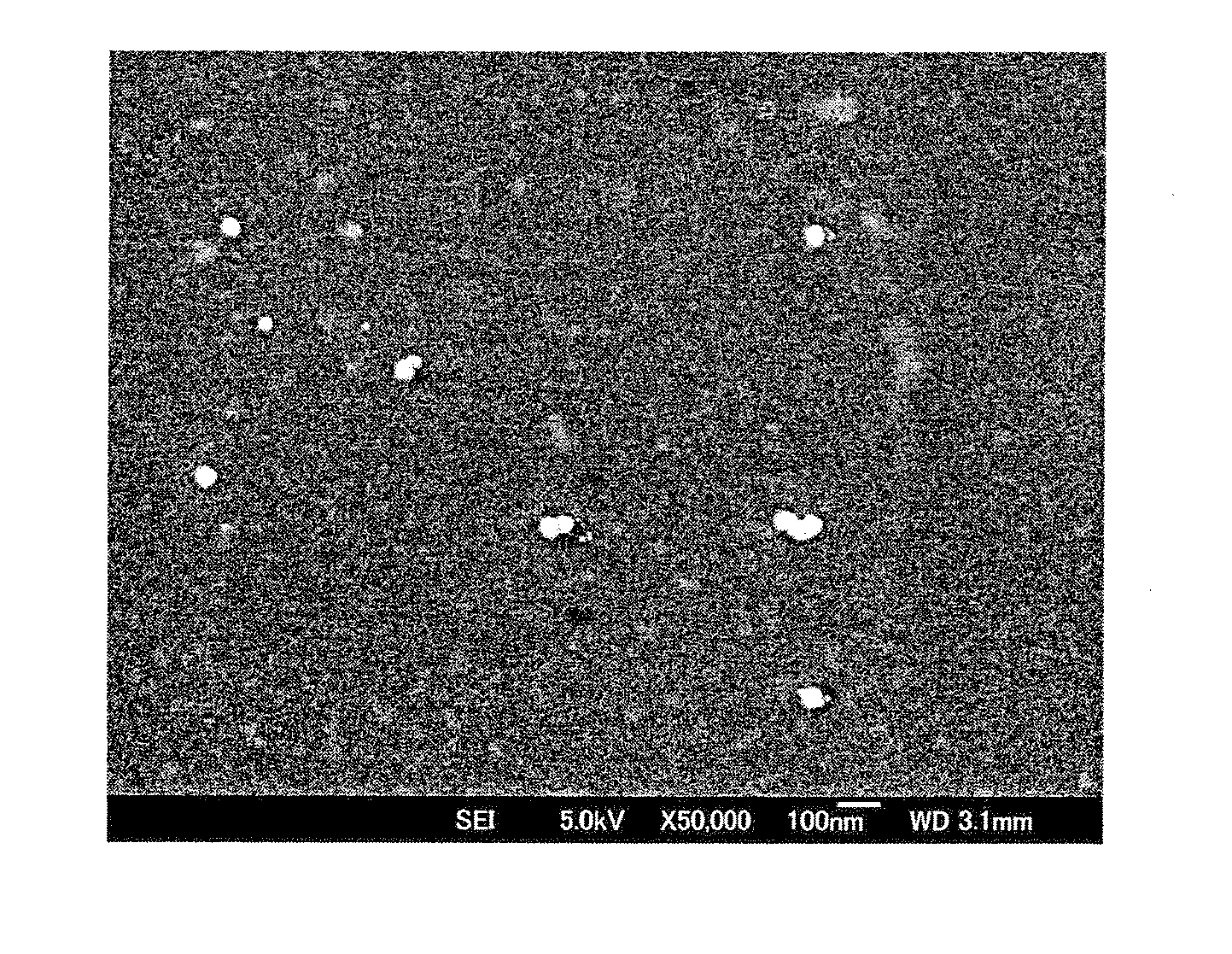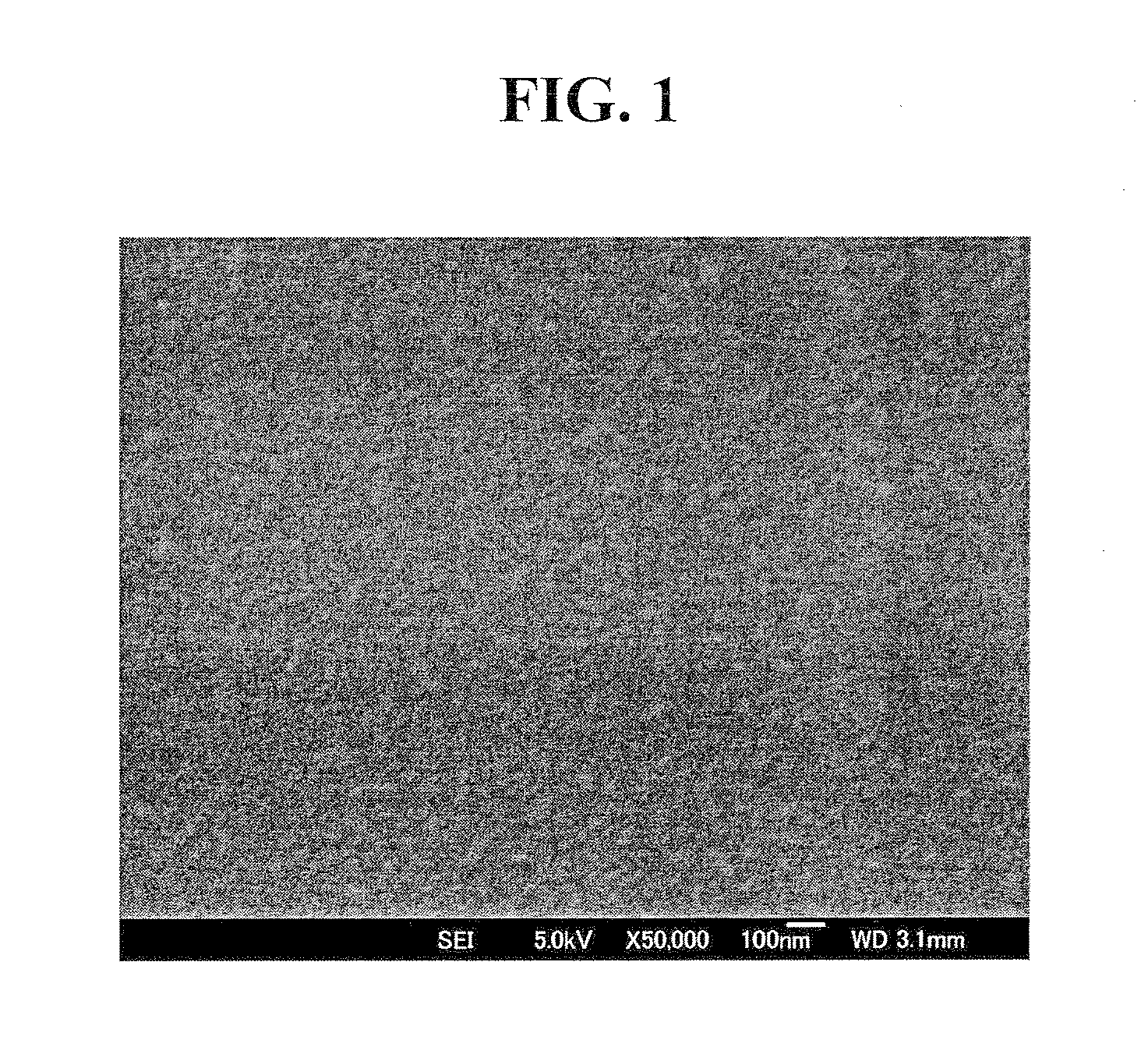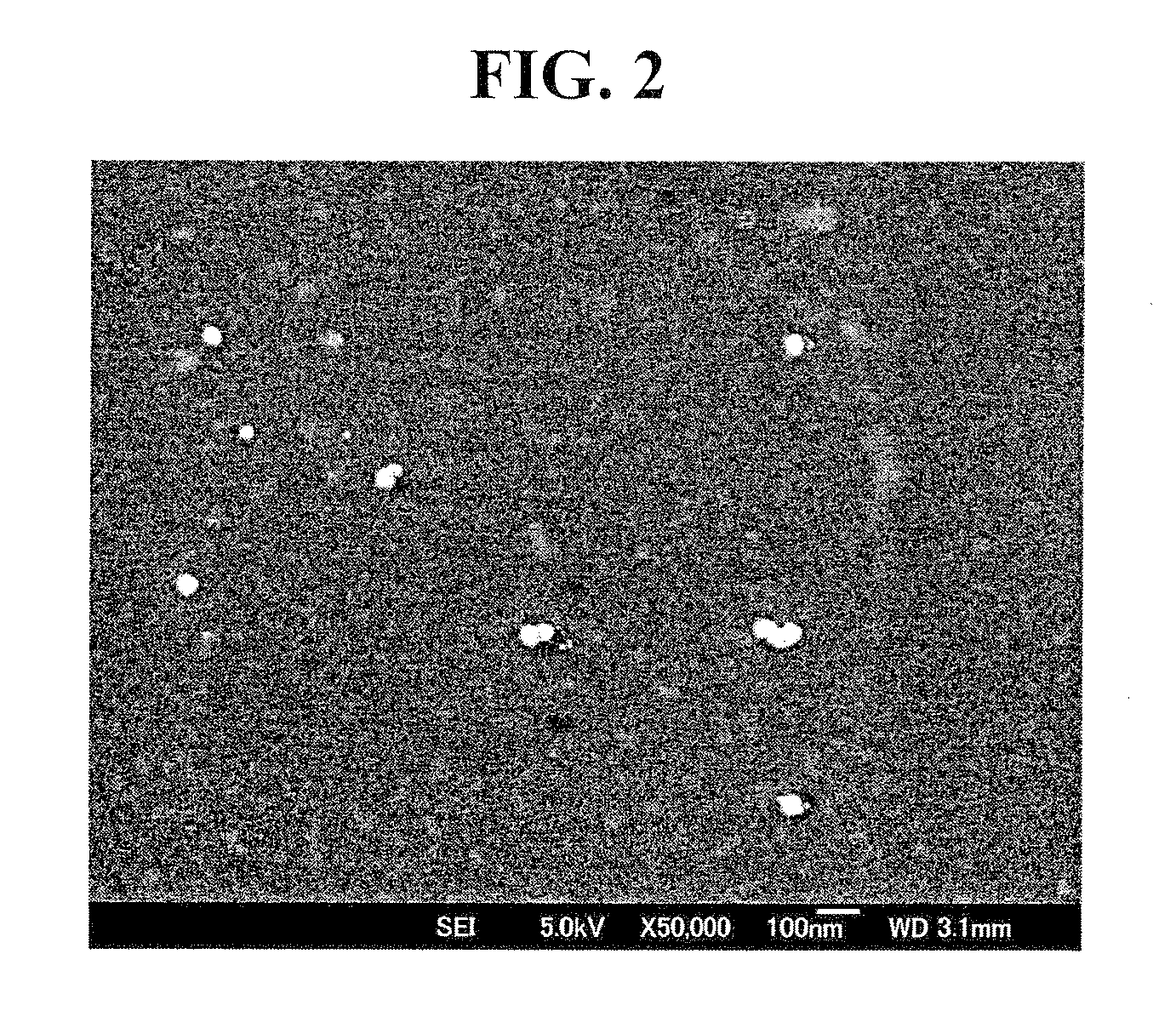Sintered Compact of Composite Oxide, Amorphous Film of Composite Oxide, Process for Producing said Film, Crystalline Film of Composite Oxide and Process for Producing said Film
a composite oxide and compact technology, applied in the direction of conductive materials, cable/conductor manufacturing, insulating support, etc., can solve the problems of particle generation, adverse effect of particles on the flatness and crystallinity of sputtered film, and inability to obtain amorphous film by sputtering upon adding water, etc., to achieve fast etching rate, low film resistivity, and superior
- Summary
- Abstract
- Description
- Claims
- Application Information
AI Technical Summary
Benefits of technology
Problems solved by technology
Method used
Image
Examples
example 1
[0082]Indium oxide powder, tin oxide powder and calcium oxide powder as the raw materials were weighed to achieve In:Sn:Ca=90.78:9.08:0.14% based on the atomicity ratio, and mixed with a super mixer in an atmospheric environment for 3 minutes at 3000 rotations per minute.
[0083]Subsequently, water was added to the mixed powder to obtain slurry in which the solid content is 50%, and the slurry was pulverized with zirconia beads having a diameter of 1 mm for 2 hours to achieve an average grain size (D50) of the mixed powder of 0.6 μm or less. PVA (polyvinyl alcohol) was thereafter mixed at a ratio of 125 cc per kilogram of slurry, and granulated under the conditions where the granulator's inlet temperature was 220° C., outlet temperature was 120° C., and disk rotation was 9000 rpm.
[0084]Subsequently, granulated powder was filled in a mold of a prescribed size to obtain a target having an 8-inch diameter, and pressed at a surface pressure of 780 kgf / cm2 to obtain a compact. The compact ...
examples 2 to 6
[0093]The sintered compact composition of Example 1 was changed as follows in Examples 2 to 6, whereby the other conditions are the same as Example 1.
[0094]The atomicity ratio % of the sintered compact composition in Example 2, 3, 4, 5 and 6 was changed to In:Sn:Ca=90.66:9.07:0.27, In:Sn:Ca=90.41:9.04:0.55, In:Sn:Ca=89.91:8.99:1.10, In:Sn:Ca=89.41:8.94:1.65, and In:Sn:Ca=89.09:8.91:2.00 respectively.
[0095]As a result of measuring the resistivity of the sputtering targets obtained as described above, the resistivity was in the range of 0.15 to 0.18 mΩcm. The crystallinity during deposition, the crystallization temperature, and the resistivity of the crystallized film were shown in Table 1, respectively.
[0096]From the foregoing results, the crystallinity of the deposited film was amorphous in all of the Examples, and, although the crystallization temperature gradually increases to a higher temperature pursuant to the increase in the calcium additive concentration, as evident from the ...
examples 7 to 14
[0098]In substitute for adding calcium as in Examples 1 to 6, calcium and magnesium were added in Examples 7 to 14.
[0099]Here, the calcium concentration and the total of calcium and magnesium were made to coincide. Specifically, the calcium concentration of Example 1 and the total concentration of calcium and magnesium in Example 7 were made to be the same. Moreover, the calcium concentration of Example 2 and the total concentration of calcium and magnesium in Examples 8, 9, and 10 were made to be the same, respectively, and the concentration of calcium and magnesium in Examples 8, 9, and 10 was changed to 1:1, 1:2, and 2:1, respectively.
[0100]In addition, the calcium concentration and the total concentration of calcium and magnesium of Example 3 and Example 11, Example 4 and Example 12, Example 5 and Example 13, and Example 6 and Example 14 were made to be the same. Upon measuring the resistivity of the sputtering targets obtained as described above, the resistivity was in the rang...
PUM
| Property | Measurement | Unit |
|---|---|---|
| temperature | aaaaa | aaaaa |
| crystallization temperature | aaaaa | aaaaa |
| temperature | aaaaa | aaaaa |
Abstract
Description
Claims
Application Information
 Login to View More
Login to View More - R&D
- Intellectual Property
- Life Sciences
- Materials
- Tech Scout
- Unparalleled Data Quality
- Higher Quality Content
- 60% Fewer Hallucinations
Browse by: Latest US Patents, China's latest patents, Technical Efficacy Thesaurus, Application Domain, Technology Topic, Popular Technical Reports.
© 2025 PatSnap. All rights reserved.Legal|Privacy policy|Modern Slavery Act Transparency Statement|Sitemap|About US| Contact US: help@patsnap.com



